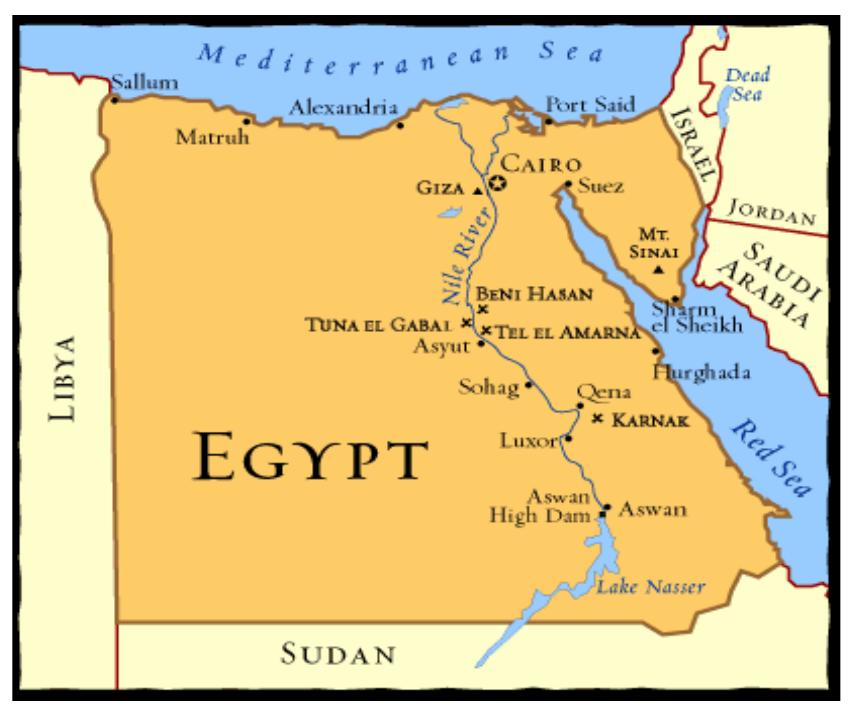Inverse Modeling of Groundwater Flow of Delta Wadi El-Arish
https://doi.org/10.4236/JWARP.2012.47050Abstract
Egypt is mainly covered by desert and only 4% of total lands is arable, mainly the alluvial plain of the Nile and its delta. In order to cope with the increasing population, the government of Egypt has been pressed into the development of Si-nai Peninsula. So, it is indispensable to evaluate the potential groundwater resources for the development of the Sinai Peninsula. The key components are a conceptual model and a groundwater model with certain mathematical compo- nents. The conceptual model is a system analysis of the hydrogeological understanding of how water flows into, through and out of a groundwater system. Based on available borehole data, the study area is characterized to reach to the most representative conceptual models. Finally, a finite difference groundwater model was applied utilizing the graphic user interface GMS were used. In order to handle problems at regional scale, automated parameter estimation (PEST) was used in GMS. Moreover, recharge was parameterized using zones by defining these zones several factors were considered; for example, surface geology, density of vegetation, general land use, and LANDSAT image. How-ever, Groundwater flow model successfully calibrated. Calibrated groundwater model helped to identify the heteroge-neity in the aquifer.
References (12)
- Faculty of Engineering, Cairo University, "Groundwater Management Study in El-Arish Rafaa Plain Area," Phase 1, Main Report, Vol. 1, Water Resources Research Insti- tute, Ministry of Public Works and Water Resources, 1989.
- Faculty of Engineering, Cairo University, "Geological Sounding Survey in El-Arish, Sheikh Zuwyied, Rafah Area," Main Report, Vol. 1, Water Resources Research Institute, Ministry of Public Works and Water Resources, 1989.
- A. W. Harbaugh, E. R. Banta, M. C. Hill and M. G. McDonald, "MODFLOW-2000, the US Geological Sur- vey Modular Ground-Water Model-User Guide to Mo- dularization Concepts and the Ground-Water Flow Proc- ess," US Geological Survey Open-File Report 00-92, 2000. Figure 12. Simulated piezometeric levels in 2006.
- JICA, North Sinai, "Groundwater Resources Study in the Arab Republic of Egypt," Final Report, 1992, The main conclusions are as follows:
- A. Shata, "Groundwater and Geomorphology of the Northen Sector of Wadi El Arish Basin," Bulletin Society Geograph Egypt, Vol. 32, 1959.
- The model matches the available data quite well. Inverse modeling with a PEST provides to be a uni- que tool to calibrate groundwater modeling.
- J. J. Seguin and M. Bakr, "Sinai Water Resources Study, Modelling of Three Aquifers: El Arish, Rafah, and El Qaa," WRRI, NWRC, Egypt, 1992.
- The density driven model should be carried out in the future to get a better understanding about the saltwa- ter intrusion. The main recommendations are as follows:
- J. Doherty, "PEST: Model-Independent Parameter Esti- mation," Watermark Computing, 1994.
- The option to desalinate water from seawater and the existing wells should be considered as an economic solution in the future. It is recommended due to its medium cost which between 5 to 10 Egyptian pounds.
- J. Doherty, "Manual and Addendum for PEST: Model Independent Parameter Estimation," Watermark Numeri- cal Computing, Brisbane, 2008.
- J. Doherty, "Ground Water Model Calibration Using Pilot Points and Regularization," Ground Water, Vol. 41, No. 2, 2003, pp. 170-177. doi:10.1111/j.1745-6584.2003.tb02580.x
 Ramadan Abdelaziz
Ramadan Abdelaziz













